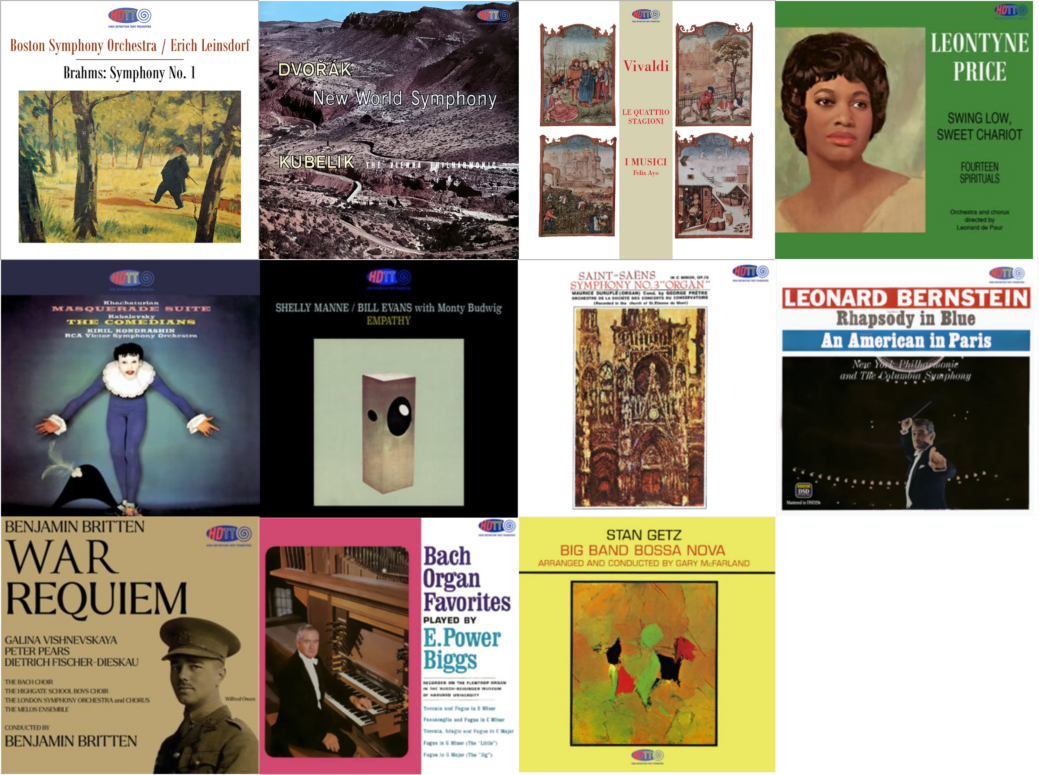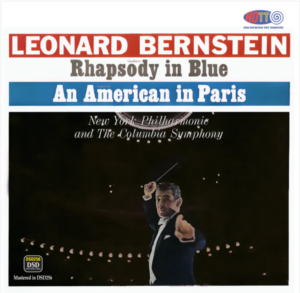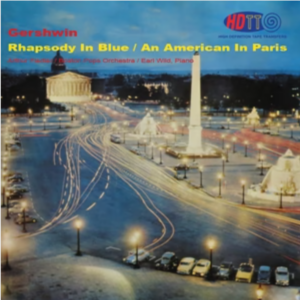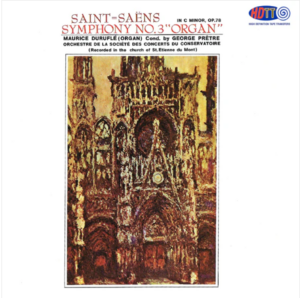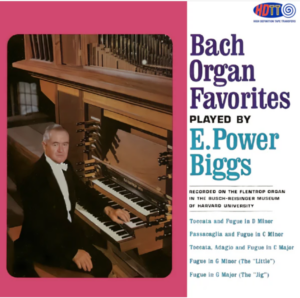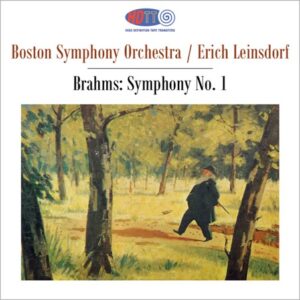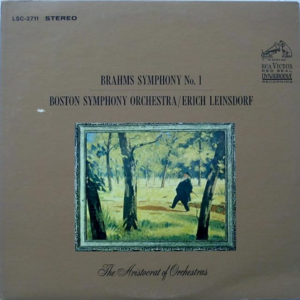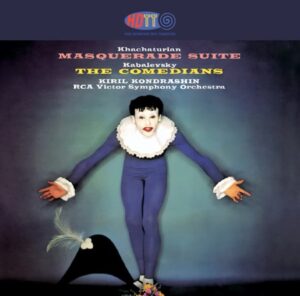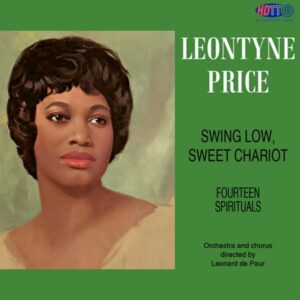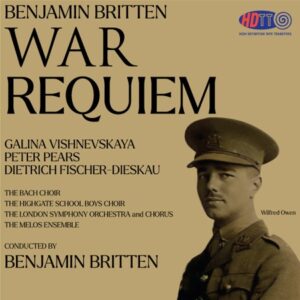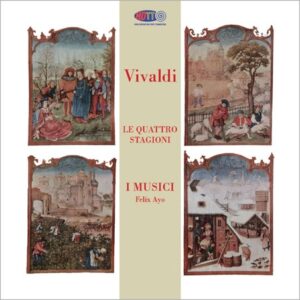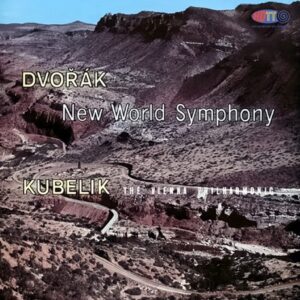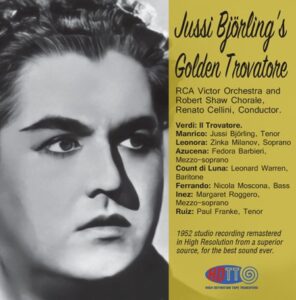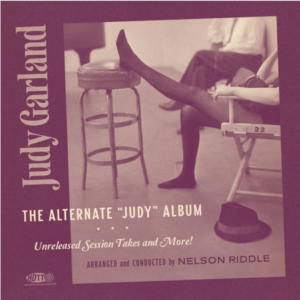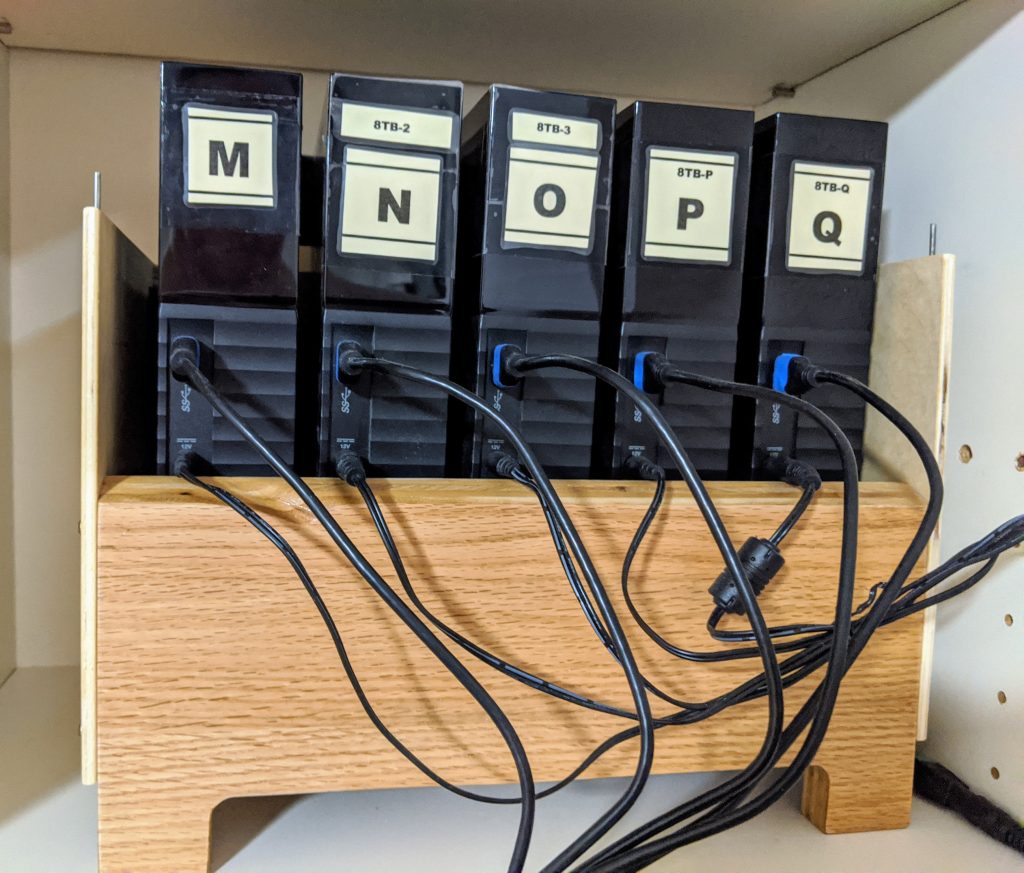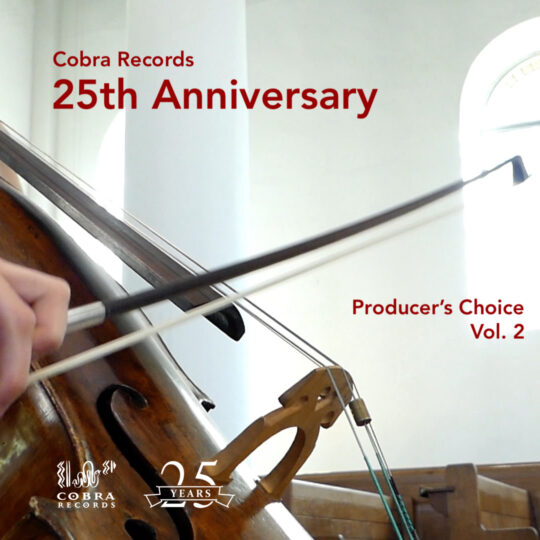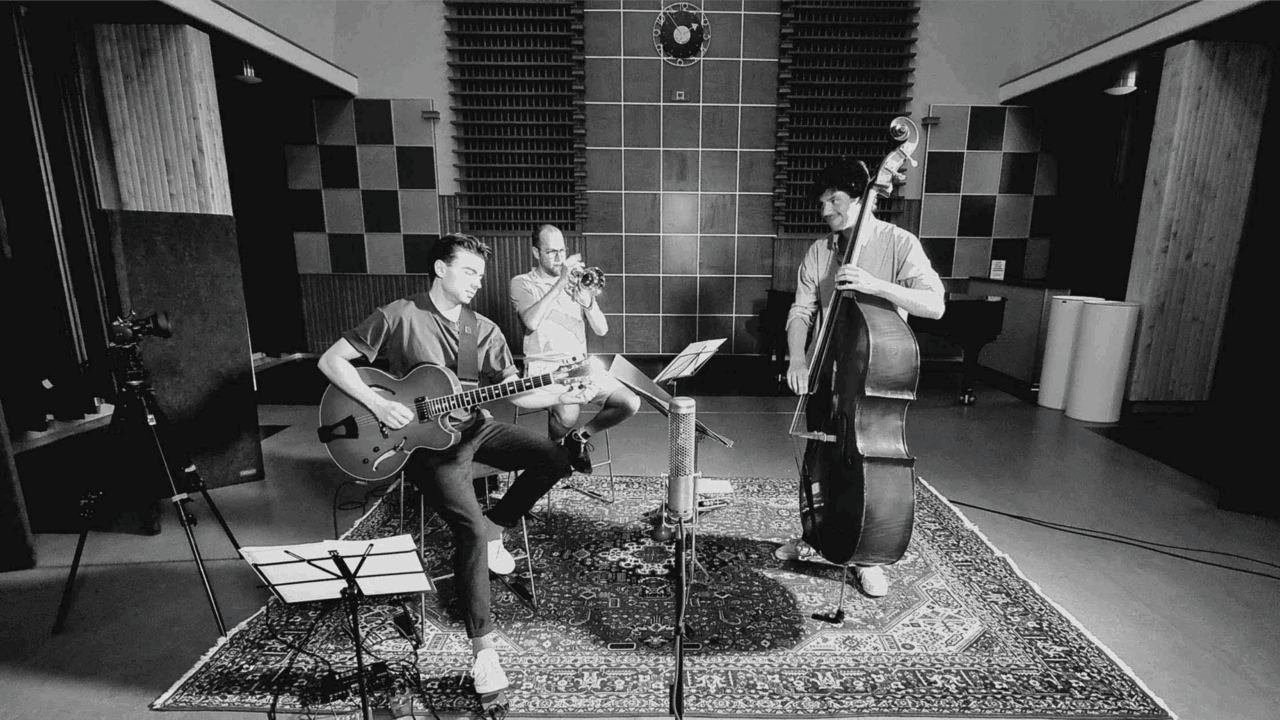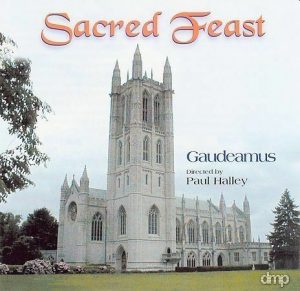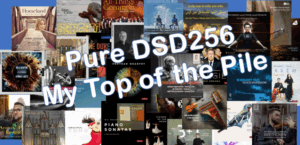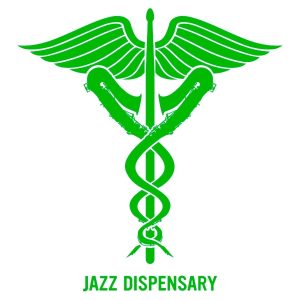If you listen to digital, love classic jazz and the golden age of stereo classical recordings, then surely you have been listening to the outstanding releases from Bob Witrak's High Definition Tape Transfers. Bob's transfers to high resolution digital (DSD256 and DXD) very typically sound better than the releases from the labels themselves. You know—the folks who have access to the master tapes? And whenever Bob gets access to a better sounding source, he'll frequently make a new transfer using that new source and release it as a "Redux" of his early transfer. If you've not yet explored the huge catalog of recordings HDTT has released over the past 18 years, you are missing some great sounding music. Here are some recent releases that are just wonderful.
Gershwin Rhapsody In Blue, An American In Paris, Leonard Bernstein (piano soloist and conductor), Columbia Symphony Orchestra, New York Philharmonic. HDTT 1960 2024 (Pure DSD256) HERE
Joy! A Pure DSD256 release transferred from a 15ips production master tape, and it is terrific. It is the performance of An American in Paris where this album really shines, in my opinion, with the far superior New York Philharmonic performing and with Bernstein's undivided attention as conductor. It is worth the price of admission all on its own. And sound quality is excellent in this transfer. I have several alternate reissues of this recording. I've lived with the Sony/Columbia SACD release for many years, and it is quite nice. But this new HDTT transfer is simply more transparent, more highly resolved, with greater transient "snap" and definition. It simply trounces the sonics of the SACD (to which I listen in a DSD64 rip). This HDTT transfer is a great release! If you like An American in Paris, if you like Bernstein, this HDTT transfer is the release to add to your library.
On the accompanying Rhapsody in Blue, Bernstein is both soloist and conductor. And the orchestra is the quite competent Columbia Symphony Orchestra. But the Columbia Symphony Orchestra is simply no match for the uber excellence of the NYP players. The overall impact of this performance of Rhapsody in Blue has always somewhat disappointed me, but you may have a different reaction. With Bernstein both playing soloist and conducting, and with the Columbia Symphony Orchestra players not being at the same technical level as their counterparts in the NYP, too much nuance and character is missed.
The Bernstein Rhapsody in Blue performance comes nowhere near displacing my all time favorite: Arthur Fiedler conducting the Boston Pops, with Earl Wild, piano (available in a great digital transfer from HDTT, HERE). The Fiedler/Wild performance is more characterful. And, it benefits from the better sound quality delivered by the Lewis Layton/RCA team than Bernstein gets from the Columbia. But perhaps it's just that I imprinted on the Fiedler/Wild account of Rhapsody in Blue, so your mileage may vary.
Gershwin Rhapsody In Blue, An American In Paris, Earl Wild, Arthur Fiedler, Boston Pops. HDTT 1960 2022 (DSD256, DXD) HERE
See discussion above.
Saint-Saëns Symphony No. 3 "Organ Symphony," Georges Prêtre, Maurice Duruflé, Paris Conservatory Orchestra. HDTT 1963 2024 Redux (DSD256, DXD) HERE
This performance of Saint-Saëns' Organ Symphony, by Georges Prêtre and Maurice Duruflé has long been one of my favorite traversals of this great war horse. There is a very French piquancy to the music that is not captured by other performances. Prêtre provides a characterful presentation while maintaining an excellent balance of orchestra and organ. And, while I love the performance and value it highly, the challenge of recording on location in the church is evident by some loss of orchestral detail, which just gets swamped by the reverberation. Both the great Munch/BSO/Zamkochian Living Stereo recording (HERE) and the excellent Paray/Detroit Symphony Orchestra/Marcel Dupré Living Presence recording (HERE) have more realistic and detailed orchestral sound. But the glory of the Cavaillé-Coll organ heard on location in Church of St.-Etienne-du-Mont is not be denied. It is worth the price of admission all on its own.
This Redux release is much improved over the original HDTT release from years ago. The new 2-track tape source makes for a definitively better, and more rewarding, release of this album.
Bach Organ Favorites - E. Power Biggs. HDTT 1961 2024 (DSD256, DXD) HERE
I love the sound of a Flentrop Organ and this Flentrop organ at the Busch-Reisinger Museum of Harvard University is one of the best in the country. There is simply a special sound to a tracker organ that you can't hear with any other style of organ. This recording has always held a special place in my pantheon of great organ recordings, and it has never sounded better than in this marvelous new reissue from HDTT. It you love organ music, get this!
The music is all Johann Sebastian Bach. And some of Bach's most well known and well loved works for organ are played immaculately by Biggs. This is not bombastic Biggs in this recording, this is the Baroque specialist Biggs. For which I rejoice.
Sourced from a 2-track tape, the sonics in this transfer are excellent. The magic Bob Witrak applies in making his tape transfers is clearly evident here.
Big Band Bossa Nova, Stan Getz and company, arranged and conducted by Gary McFarland. HDTT 1962, 2024 (DSD256, DXD) HERE
This release is a sonic delight! Very clean, very pure, highly detailed and exceptionally well resolved. The leading edges of percussive strikes are precise and very fast. The timbre of instruments is very natural and well preserved. There is nothing artificial here, no hyper-definition. It is all just deliciously relaxed, sounding like real instruments in a real space.
Brahms Symphony No. 1, Erich Leinsdorf, Boston Symphony Orchestra. HDTT 1964 2024 (DSD256, DXD). HERE
For reasons that always escape me, Erich Leinsdorf seems ever the dismissed conductor in audio circles. I don't get it. He is masterful in so many ways and I think he's always gotten a bum rap. He never really enjoy a successful tenure as permanent music director of a major orchestra, and for that I'm sure there must be some reasons. But the recordings he's left us are certainly capable, and often quite insightful. His Bartok Concerto for Orchestra (HERE) is one of the great recordings of that work. His Wagner Die Walküre (HERE) is excellent. His Brahms Piano Concerto No. 1 with Van Cliburn is definitive to my ear (HERE). And his performance of No. 2 with Richter is superb (HERE).
As "Lance" on the Classical Music Guide Forums (HERE) has said, "Any man that was an assistant to Bruno Walter and Arturo Toscanini, with a conducting background originating in Salzburg has to come away with more 'art' than he's given credit."
This Brahms Symphony No. 1 is a very serviceable performance. And it is a pleasure to hear it without the Dynagroove EQ—always a signal to me to avoid the LP. The infamous Dynagroove EQ meant screechy highs, no bass, and compressed dynamics. But not in this HDTT reissue which has been sourced from a 2-track tape with none of that disastrous equalization. Recorded by the famous Layton/Mohr team, this reissue has the characteristics of the great Living Stereo era of releases. Lewis Layton captures the full orchestra with great detail and excellent dynamics. Very satisfying!
So, is this my favorite performance of the Brahms No. 1? No. But as I say, it is a very serviceable performance with something a bit different to say in its interpretation of the score.
Original RCA LP cover from 1964. Note the infamous Dynagroove insignia.
Khachaturian Masquerade Suite, Kabalevsky The Comedians, Kiril Kondrashin RCA Victor Symphony Orchestra. HDTT 1958 2024 Redux (DSD256, DXD). HERE
I am a complete fan of the RCA Living Stereo catalog (Decca and Mercury, too). So when another release comes along, I'm going to check it out. And "warhorse" or not, this album is one of the great Living Stereo recordings with excellent music by twentieth century Soviet composers Aram Khachaturian (1903-1978) and Dmitry Kabalevsky (1904-1987). The RCA Victor Symphony Orchestra members play their hearts out for Kirill Kondrashin. And in the process, we are given definitive performances of these works.
Filled with memorable melodies and endlessly used in cartoons, films and commercials, this is music that will be familiar to you. But you need to hear it in it's original context as performed on this album. And there is no better release on which to hear the music than this superb reissue from HDTT. Sourced from a 2-track tape it has all the detail, color and dynamics one could hope to hear. If you have the earlier HDTT release, don't pass up this REDUX reissue—it is supremely better with this new source tape.
One of the great successes of the legendary RCA Lewis Layton and Richard Mohr recording team. Highly recommended.
Empathy, Bill Evans with Shelly Manne. HDTT 1962 2024 (DSD256, DXD). HERE
Empathy was recorded during a session in 1962 by Rudy van Gelder for Verve Records. It came at a time when both Evans and Manne were sharing a bill in New York at the Village Vanguard. Both Shelly Manne and Bill Evans were highly respected figures in the jazz scene at that time, but from different aesthetics. Shelly Manne was known for his versatility and ability to adapt to various styles, while Bill Evans was celebrated for his lyrical, harmonically rich piano playing. Together, they seamlessly integrate Manne's West Coast cool style with Evans' more introspective East Coast approach. With Manne's bass player, Monty Budwig, this trio made an album that is one of the significant works in jazz history, and with four out of six tunes that Evans would never record again in any format.
They created some beautiful, relaxing music on this date, which was to be their only recording as a trio. Manne and Evans were to record a second session four years later with Eddie Gomez on bass, A Simple Matter of Conviction. Too bad, I would have loved it if Evans and Manne recorded some more together.
As always from HDTT, an excellent transfer with utterly silent background and excellent instrumental detail.
Leontyne Price Swing Low, Sweet Chariot. HDTT 1962 2024 (DSD256, DXD). HERE
This is an often overlooked RCA Living Stereo title, but it offers top-tier sound that competes with the sonic quality of the most admired titles in the Living Stereo series. The RCA team of producer Richard Mohr and recording engineer Lewis Layton deliver a very natural sounding recording.
And Leontyne Price is fantastic. There have rarely been voices as powerfully beautiful and emotive as that possessed by Leontyne Price. Whether you care for spirituals or not, get this album just to luxuriate in one of the most glorious voices ever recorded. Highly recommended.
Britten's War Requiem, Benjamin Britten conducting the London Symphony Orchestra, with soloists Galina Vishnevskaya, Peter Pears, and Dietrich Fischer-Dieskau. HDTT 2024 1963 (DSD256, DXD). HERE
Britten's War Requiem is one of the great choral masterpieces of the twentieth century. And this is the definitive performance and recording of that work. Conducted by Benjamin Britten, chorus master David Willcocks, soloists Galina Vishnevskaya, Peter Pears, and Dietrich Fischer-Dieskau.
What a cast! And all delivering committed, impassioned performances.
The Bach Choir, The Highgate School Boys Choir and the London Symphony Chorus provide immaculate, precise, highly articulate choral work in the inimitable excellence of the great English choral tradition.
And the sonics are captured with knock-your-socks-off impact and definition by Decca recording legend Kenneth Wilkinson and his team. Clear, detailed, boldly dynamic, with excellent balance of the vast resources assembled. Great choral recordings simply don't get any better than this.
HDTT's transfer from a 2-track tape is superb. I'm listening to the DSD256 file and it is a pure joy to hear. Utterly transparent. Voices as clear as if the singers are in the room with me. This release is a triumph all around.
Vivaldi Le Quattro Stagioni (The Four Seasons), I Musici. HDTT 1959 2024 (DSD256 DXD). HERE
This is, as far as I'm aware, the first recording of The Four Seasons. It was recorded in Milan in 1958 by Philips, released the following year and was the recording I imprinted on. It was my mainstay of a recording until 1982 when Trevor Pinnock's recording with the English Consort and Simon Standage was released. Let's just say allegiances shifted. But this continues to be a great performance of this work. And it has never sounded nearly as good as it now sounds in this HDTT transfer from a 2-track tape.
I Musici play with precision, great ensemble and an overall relaxed geniality that I find totally engaging to this day. The sound quality of the modern instruments is fuller and richer than the period instruments used in the Pinnock recording, and the early digital sound quality in the Pinnock recording only exacerbates matters. So, if you prefer modern to period instruments, this release has added appeal.
On the other hand, there are recent new recordings of this music in high resolution digital and playing on period instruments that are excellent in both performance and sound quality: Gunar Letzbor leading Ars Antiqua Austria (Challenge Classics Northstar 2018, HERE) and Rachel Podger leading Brecon Baroque (Channel Classics 2018, HERE). Plus the much older 2007 recording by Kuijken and La Petite Bande recently remastered from the original DXD files (Accent 2007, HERE). All of these are with period instruments if that is your cup of tea (as it is mine). All are excellent.
For recordings using modern instruments but still with a more historically informed aesthetic, I would start with the original I Musici recording from HDTT discussed here. It's at the top of my pile. From there, if you want a larger ensemble, consider Arabella Steinbacher leading the Munchener Kammerorchester (Pentatone 2019, HERE). She and her Munich compatriots are superb. Plus, she contrasts by including Piazzolas's Four Seasons of Buenos Aires which is a real treat to hear.
Apologies for wandering so far astray from the I Musici release. It's one of the great performances and this new HDTT mastering is outstanding.
Dvořák New World Symphony - Rafael Kubelik, Vienna Philharmonic Orchestra. HDTT 1956 2024 (DSD256, DXD). HERE
Kubelik's performance of Dvořák's New World Symphony is one of the definitive performances of this great work. Yes, this symphony is a warhorse. But what a delightful excursion when performed with such characterful insight, precision and emotional impact as delivered by Kubelik. I'm well past 20 different performances of the New World in my library, but this Kubelik performance with the Vienna Philharmonic ranks right near the top of my preferences.
Hold on, you say... This is a 1956 recording, certainly there are others with better sound quality than a 1956 recording.
And to that I would say: (1) performance over sonics, grasshopper, and (2) this is a Decca 1956 recording with producer John Culshaw and engineer James Brown. That's high quality, and the stereo imaging and orchestral color match. Yes, the sound is a bit muted, a bit dark. It is transferred from Decca wide band LP pressing. And if you know those LPs, well... that is the sound you get here: rounded, a bit full in the mid-bass, a bit soft overall, and beautifully, lovingly "tubey" in overall sound. The background is dead quiet—no groove noise. Just lovely, tubey, early Decca LP sonics.
Is this my favorite recording of From the New World? Hmmm, possible not. I may prefer the Istvan Kertesz recording (Decca, 1961) as reissued by HDTT (HERE). But I have a great fondness for everything conducted by Kertesz. And this 1956 recording from Kubelik is a landmark in stereo recording history, deservedly so. It sets the standard by which to compare all other performances of this work. Highly recommended.
Jussi Björling's Golden Trovatore. HDTT 1952 2024 (mono) (DSD256, DXD). HERE
Gloriously restored to excellent sound quality by restoration master John Haley, Harmony Restorations, LLC., this is a marvelous gift to opera lovers. As John writes in the liner notes, "This celebrated 1952 recording of Verdi's Il trovatore will undoubtedly be on every knowledgeable opera lover's list of the greatest recordings of this opera, often at or near the top. Of course the combination of five seasoned performers who inhabit their roles with a superior level of suitability, musical authority and vocal glory is a big factor, but one cannot overlook the fact that the 'greatest among equals' in this regard is Björling's matchless Manrico, in his only commercial recording of one of his greatest roles...Björling's combination of youthfulness, vocal power, lyrical phrasing, and sheer beauty of tone, combined with the highest level of artistry, makes him arguably the best equipped tenor for this role that we can find on recordings."
It is a marvelous performance, exceptionally well restored. Thank you, John Haley and HDTT!
Judy Garland: The Alternate "Judy" Album. HDTT 1956 2024 (96kHz) HERE
What a great release! John Haley's restoration is a work of tremendous effort, skill and love. The sound quality of this restoration from old acetates is remarkable. And very listenable and enjoyable. This album is not just for collectors. It is for all of us who admire the performance artistry of Judy Garland. She was a great entertainer, and being able to hear these alternative takes, outtakes and more reinforces that viewpoint immensely. Thank you, John, for your efforts creating this wonderful gift to all of us.
You may ask, why is this released at only 96kHz/24-bit? I did. So, the reply I got from John Haley was (paraphrased) "Rush, it's from acetates. Scratchy, noisy, low resolution acetates." But John, says I, it sounds so good. Surely it might sound even better in DSD256? Yeah, but no. Just get it. You'll love it!
This release is such an important document of Judy Garland's work, and contains such great alternate renditions of songs for which she is known, that I'd like to share with you the full description and background written by John Haley as posted on HDTT's website (with permission, original found HERE):
"HDTT is pleased to present the first release of these never-before-heard alternate takes of songs on Judy Garland's well-loved 1956 Capitol album entitled "Judy." These recordings were recently discovered by award-winning designer and collector Raphael Geroni on a unique set of acetate discs that he owns, preserving the original recordings made in late March, 1956. Except for one song, they were not the vocal takes that appeared in the Capitol "Judy" album when it was released over six months later, on October 10, 1956. The acetate records have been transferred and meticulously restored by acclaimed audio restoration engineer John H. Haley of Harmony Restorations, LLC.
"It has always been assumed that the released album was recorded at the documented recording sessions at Capitol Studios in Hollywood, California on March 19, 26, 27 and 31, 1956, but it is now revealed that there is more to that story. After the very successful release of Garland's first Capitol album in 1955, immediately following a 90-minute CBS television special, the following year it was decided to again pair a Capitol album release with a CBS TV special. This time, the TV show would employ the music from Garland's second Capitol album, "Judy," with no separate orchestra for the show itself. In this half-hour show, which aired live on April 8, 1956, Garland performed some songs live to pre-recorded orchestral tracks from the Capitol recording sessions and lip-sync'ed other songs to the pre-existing Capitol recordings that included the vocals. The conductor/arranger, Nelson Riddle, was credited for both the album and the TV show. The show appeared as an episode of the "General Electric Theatre" series hosted by GE spokesman Ronald Reagan. We can tell that the acetates are from the original March sessions because they correspond to the pre-recorded music that was used in the TV special that immediately followed. The complete restored soundtrack of this closely related TV show is included in this release.
"The LP album ultimately included only eleven of the twelve songs originally recorded in March, omitting the beautiful Jerome Kern song "I'm Old-Fashioned," which was not released until the "Judy" album appeared on CD in 1989. Fortunately, the acetates include the earlier, tenderly sung version of this song, now heard for the first time.
"This HDTT release presents twelve recordings from the original March sessions preserved on the set of acetate records that Geroni discovered. From what we can tell, only one song from the March sessions, the fanciful "I Will Come Back," appeared in the final album with the original March vocal, and the restored acetate of that song is included here for the sake of completeness. As shown in the track-list below, there are (1) two separate takes of one song ("Dirty Hands, Dirty Face")—one of them now appearing here as the first bonus track, (2) an instrumental by Riddle ("Blues for Peter Gennaro") that was used in the TV show but did not appear in the album, and (3) the March recordings for the rest of the songs that appear in the final album except for "Just Imagine" and "Any Place I Hang My Hat is Home." It is unknown why no acetate recordings for these two songs were found, if they ever existed, but from the sound of Garland's voice in the version of "Just Imagine" that appears in the album, it seems quite possible that this was another original recording from March that survived in the final album, although there is no way to prove it. For "Any Place I Hang My Hat is Home," we have included as a bonus track the superb live rendition of that song from Garland's roughly contemporaneous Las Vegas debut concert of July 16, 1956 (HDTT's release of the complete concert is found HERE).
"What happened here is that in early 1956 Garland's infant son Joseph Luft (born March 25, 1955) came down with a respiratory infection, a common enough thing in young children, and Garland caught it. Children can recover quickly from such an infection, but adults who catch it often do not. Singers dread respiratory infections because it can take many weeks for a singing voice to return to normal, even after the infection has otherwise subsided. Garland's lingering infection left her singing somewhat impaired in early 1956, but she was in no position to put off the scheduled March recording sessions because if that had happened, there would have been no music for the TV show that was to immediately follow—she was forced to charge ahead. At some later point after she had fully recovered, before the October 10 release date, she went back into the Capitol studios and redid the vocals on all but one of the tracks (perhaps two?), and we hear these redone versions in the released album. Research has not succeeded in discovering when the additional sessions occurred; they appear to be undocumented.
"Even recovering from a respiratory infection, Garland, being the trouper that she was, certainly delivered the goods. In some instances, listeners may find that her first interpretations are more dramatic (e.g., "Come Rain or Come Shine"), have a greater sense of irony (e.g., "Life is Just a Bowl of Cherries"), or are more touching (e.g., "I'm Old Fashioned") than the later, more perfectly vocalized tracks. This release truly presents an alternative Garland album, which although not without flaws, can be enjoyed alongside the released album as a different experience of the same songs. Garland was ever the canny performer who could turn whatever circumstances she was presented with to her advantage, and there is no doubt that she did so in what is heard here.
"In addition to the restored soundtrack of the closely related GE television show, HDTT presents two restored unreleased "band track" recordings for songs in the "Judy" album (just the accompaniments with no vocal), from a rare acetate record. So this release, together with HDTT's previous release of the opening night of Garland's Las Vegas appearance (see link above), documents what exists of Garland's performing and recording activity that occurred in 1956, apart from the readily available Capitol "Judy" album."




